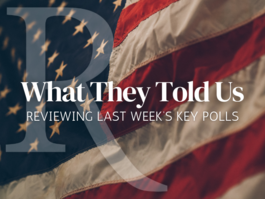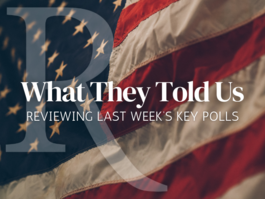How Clinton Balanced the Budget
A Commentary By Joe Conason
As America approaches the deadline for increasing the statutory national debt -- or risking a catastrophic default on our obligations to creditors and citizens -- there is no shortage of stupid ideas to restore fiscal order.
Near the top of the list is the balanced budget constitutional amendment, a durable fake pulled out of mothballs by Republicans and Democrats alike in the hope of proving their determination to assert spending control. State legislatures pass resolutions favoring the amendment, congressmen and senators issue press releases demanding its passage, knowing that the thing will never quite materialize and that, if it did, the consequences would be awful.
The amendment's latest versions, like all that have come before, are shot through with loopholes and air pockets -- such as the exception for periods when the country is at war, as we have been for nearly the past decade.
Then there is the House Republican plan to slash domestic discretionary spending and then freeze it for the next 10 years at the same level as 2006, which sounds reasonable until you realize that would require reductions of more than 40 percent in essential government services like border security, federal law enforcement, food safety, education and environmental protection.
For politicians who are more or less on the payroll of the coal industry or the meatpacking cartel, that doesn't necessarily sound so bad. As long as nobody is dying from E coli poisoning in the Capitol Hill cafeterias, maybe they believe we can afford to lay off half of our agricultural inspectors for the next 10 years. Meanwhile the rest of us belong to the special interest group that breathes the air, drinks the water and wonders what hellish bugs lurk in that package of hamburger.
Variations on these ruinous themes currently abound in Washington, where nearly every elected official is eager to prove that he or she is a single-minded accountant with the same mindless mindset as the tea party. So Sen. Claire McCaskill, D-Mo., has joined with Sen. Bob Corker, R-Tenn., to propose that annual federal spending be limited to no more than one-fifth of the gross domestic product. That sounds reasonable, too, until you realize that the nation's aging population and rising medical and pension costs will inevitably require us to spend more, not less, to keep the elderly out of poverty.
No doubt there are sensible cuts to be made in federal spending, starting with the bloated defense sector that the Republicans continue to hold sacrosanct (presumably because it is such a rich source of legal and illegal graft). The curve of health care spending must be bent downward, too.
But if we honestly wish to bring the federal budget closer to balance, without wrecking vital services or plunging the nation back into recession, why not consult the record of the one president in recent memory who actually achieved that goal? Not Ronald Reagan, the affable wingnut whose tax cuts blew open a huge deficit, but Bill Clinton -- who left balanced budgets and a nation on track to paying off the national debt entirely.
How did he do it? Clinton isn't shy about explaining what happened on his watch. The budget deals he made with the congressional Republicans were significant, but not nearly as significant as the tax increase on the wealthy that he passed, without a single Republican vote, in his first budget in 1993.
Voting to raise taxes on the rich was the crucial step toward fiscal responsibility and a long period of high employment, national prosperity and international prestige. There is no other way to stabilize the budget without inflicting grave damage on our future.
Joe Conason writes for the New York Observer.
COPYRIGHT 2011 CREATORS.COM
See Other Political Commentary.
See Other Commentary by Joe Conason.
Views expressed in this column are those of the author, not those of Rasmussen Reports.
Rasmussen Reports is a media company specializing in the collection, publication and distribution of public opinion information.
We conduct public opinion polls on a variety of topics to inform our audience on events in the news and other topics of interest. To ensure editorial control and independence, we pay for the polls ourselves and generate revenue through the sale of subscriptions, sponsorships, and advertising. Nightly polling on politics, business and lifestyle topics provides the content to update the Rasmussen Reports web site many times each day. If it's in the news, it's in our polls. Additionally, the data drives a daily update newsletter and various media outlets across the country.
Some information, including the Rasmussen Reports daily Presidential Tracking Poll and commentaries are available for free to the general public. Subscriptions are available for $4.95 a month or 34.95 a year that provide subscribers with exclusive access to more than 20 stories per week on upcoming elections, consumer confidence, and issues that affect us all. For those who are really into the numbers, Platinum Members can review demographic crosstabs and a full history of our data.
To learn more about our methodology, click here.



